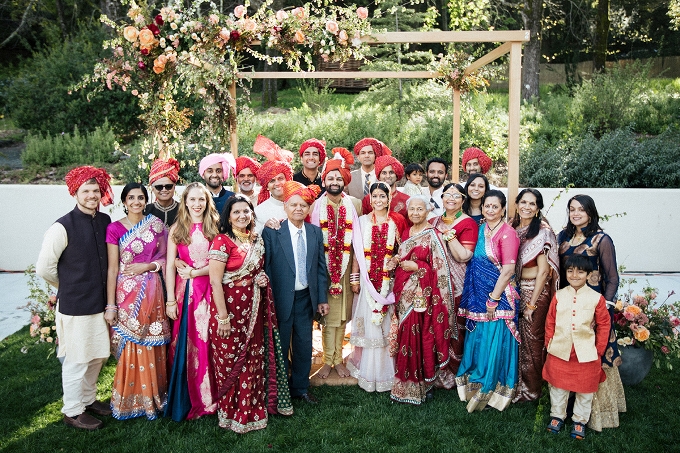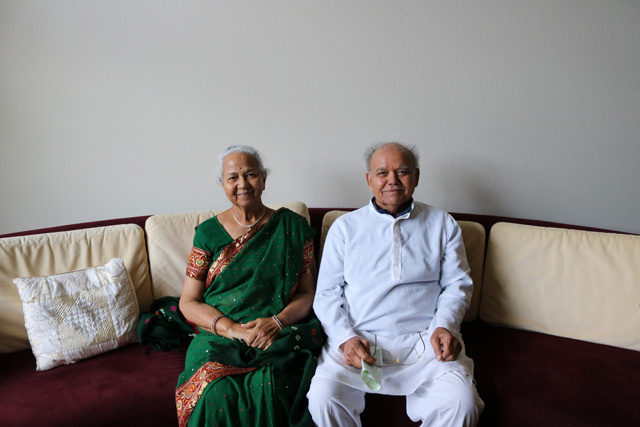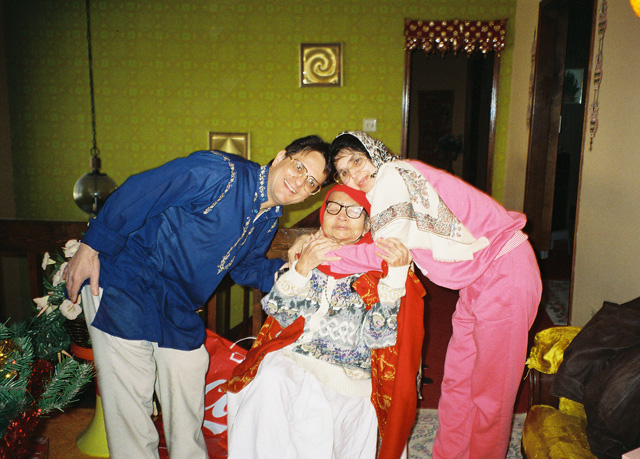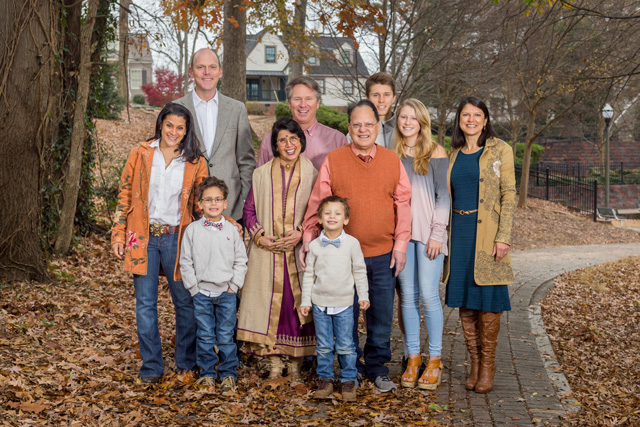The Great Parental Role Reversal
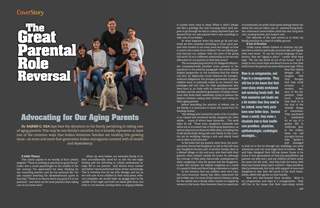
Part 1: Advocating for Our Aging Parents
by Dr. Rajesh C. Oza
Dr. RAJESH C. OZA lays bare the dynamics in his family pertaining to taking care of aging parents. This may be one family’s narrative, but it broadly represents at least one of the common ways that Indian-American families are tackling this growing issue—as more and more first-generation Indian immigrants contend with ill-health and dependency.
A Little Theory
This article aspires to be worthy of Kurt Lewin’s
epigram: “There is nothing so practical as good theory.”
Lewin was a social psychologist in the middle of the
last century; I’ve appreciated his deep thinking for
my consulting practice and for my personal life. I’ve
also enjoyed inverting his aforementioned quote in
this way: “There is no theory that’s any good if it is not
practical.” And what can be more practical than taking
care of our loved ones?
When we were babies, our extended family of elders unconditionally cared for us. But the late-night feeding and the attending to colicky restlessness always fell to our parents. And almost every mother and father I know performed these duties unstintingly. This is certainly true for my wife, Mangla, and me, as we took care of our children in their early years; without complaint, we would wake up groggy-eyed in the middle of the night and hold our sweet gifts from God close to our bosoms, nursing them or singing lullabies to soothe them back to sleep. While it didn’t always feel like a privilege the next morning when we’d prepare to go through the day in a sleep-deprived haze, we learned from our own parents that it was a privilege to take care of our babies.
So what happens when the years go by and suddenly we find ourselves attending to those same parents who tended to our every need and taught us how to tend to the needs of our children? Do our elderly parents become our children with the cycle of life going full circle? Or is it a different relationship as we become advocates for our parents in their later years?
The accompanying article by Dr. Bhagirath Majmudar compassionately provides some answers to the questions in the previous paragraph. His article shares helpful perspective on the loneliness that the elderly can face. Dr. Majmudar nicely balances the intergenerational obligations: the younger generation of grandchildren born or primarily raised in an America that privileges self over clan; the older grandparents who were born in an India with its hierarchical extended families; and the sandwich generation of Indian-Americans that finds itself ceaselessly trying to balance the hyphen between raising their children and caring for their aging parents.
Before describing the practice of elderly care in my family, it is instructive to share this quote from Dr. Sandeep Jauhar:
“My siblings and I joined the ranks of the 15 million or so unpaid and untrained family caregivers for older adults … many of whom have dementia…. The work takes its toll. These sons, daughters, husbands and wives are at increased risk of developing depression, as well as physical and financial difficulties, including loss of job productivity. Being sick and elderly in this country can be terrifying. Having a sick and elderly loved one is often a full-time job.”
In the India that my parents came from, the socio-economic theory had daughters-in-law in this full-time job. Daughters became part of another family, often in a distant village or city; and sons, who lived with their parents, often worked outside the home. So, although the concept of filial piety historically underpinned elderly caregiving, it was the spouse and the daughters-in-law who became the default caregivers as a result of a parent’s flesh and blood being otherwise occupied.
In the America that my children were born into, the socio-economic theory has often outsourced the job of elder care. For most of this nation’s history, caring for the elderly was a family affair carried out largely by women in the home. Now, however, there is a spectrum of nonfamilial, for-profit, third-party settings where the elders live and are taken care of: assisted living facilities, retirement communities, adult day care, long term care, nursing homes, and hospice care.
The objective of the next section is to share my family practices as a kind of middle ground.
A Lot of Practice
Unlike many elderly Indians in America, my parents live in what is spiritually, economically, and legally their own home. To use the formal language of academics, they are “aging in place.” I prefer what Papa says: “No one can throw us out of our house.” And it really is very much Papa and Mom’s house in that they built it from the ground up some thirty years ago. When they first visited Morgan Hill, I imagine that they thought that they could recreate a modern version of the Rajasthani childhood homes they lived in at the foot of the Aravalli Range of mountains. They purchased a residential lot on top of a golden hill in California (yes, in the Golden State, we call drought-brown hills “golden”) and managed to hold on to the lot through two weddings, one early retirement, and one near-tragic bout of malaria. Mom and Papa designed their hill-top dream house to be home to four generations of Ozas (my grandfather, my parents, my wife and I, and my children all lived under the same red-tile roof). And they built the home with their bare hands (okay, that’s a stretch—Papa and Mom hired professionals, but truly, with support of sons and daughters-in law, they did much of the work themselves, albeit with gloves on their hands).
Now let’s fast-forward three decades. Mom is an octogenarian, and Papa is a nonagenarian. They still live in the house that their razor-sharp minds envisioned and nurturing hands built. But their memories and hands are a bit shakier than they used to be; indeed, many body parts have seen better days. Several times a month, they make a ritualistic trek to their health-care providers: physician, ophthalmologist, cardiologist, oncologist… the list of medical professionals begins to look like the list of construction professionals from years ago. But now the growing list is required for upkeep of fragile, old bodies, not the building of a shiny new house on a hill.
Increasingly, there are middle-of-the-night visits to the emergency room. But Mangla and I long ago moved to our own home 42 miles away. Fortunately, my brothers and sister and their spouses live in the Bay Area, so my parents have a built-in support system. And as the eldest Indians in their community, they have the respect and care of friends, many of whom are physicians and surgeons.
Most importantly, my parents have each other. Together, one makes sure that the other takes medication as prescribed, remembers to go for medical appointments, and does a myriad of things that seemingly have nothing to with healthcare such as going for morning walks, shopping for groceries, keeping up with political events, attending social functions, watering the garden, keeping up with the stock market, cutting the vegetables for dinner, making the bed, doing the laundry, etc.
Of course, not all families are blessed with elder parents who are generally healthy, sound of mind, and supporting each other in their own home. Although most senior Indian parents in America live in their child’s home, they have social needs like my parents: belonging to a group and having a life of their own. In my part of California, I have seen these seniors sharing meals at each others’ homes, practicing yoga in the park, and singing bhajans at the temple. In recent years, there has also been a trend to communal life in commercial retirement communities catering specifically to Indians.
|
|
|
Four generations of Ozas at a family wedding: the author's parents with their children, children's spouses, grandchildren, grandchildren's spouses, and great-grandchildren. |
Dear reader, perhaps you are wondering, “The Oza Family seems to have the ideal life, right? What could go wrong?” In practice, we are blessed, but the list of what can go wrong is long and growing longer as we grow older. Here’s a Question and Answer approach to the challenges we’ve faced and are likely to face:
How did we discourage Papa from getting behind the wheel when his vision didn’t permit driving?
Slowly and respectfully. We didn’t simply take away the car keys one cloudy day. Instead, we would sit in the passenger seat while he was driving and comment that he was missing some aspects of the road. And we shared this with his physician so that she could also encourage him to cease driving. That worked well. What didn’t work was offering to do all the driving for him. And what was absolutely rejected was the idea that we get him a self-driving car. Fortunately, Mom has taken up complete driving responsibility.
How have we kept up with Mom and Papa’s evolving health conditions?
Their health-care system (Kaiser Permanente) is quite progressive in allowing an adult to “act for a family member.” Just as a parent can act for a child to order prescription refills, email the doctor, or view lab results, immunizations, and other health information, an adult child can do the same for an elderly parent. In part due to my education as a biomedical engineer, I have served as my parents’ patient advocate. I believe this has served them well as I have built trusting relationships with their doctors. But I have failed to always keep all my siblings aware of the ever-changing medical challenges that our parents face, and I sometimes feel overwhelmed by the responsibility that sits on my aching shoulders.
But life is not just about healthcare. What about financial matters?
Fortunately, Papa has an innate brilliance with debits and credits and has done an amazing job of keeping his and Mom’s bank account focused on the credits side of the ledger. Their children and grandchildren have done well professionally, so we are not a burden. Indeed, regardless of which child has through the years paid the house mortgage and property tax, or fares for flights to India, or housekeeping fees, I am confident that any one of us would step up to financially support our parents. And come tax season, my younger brother always submits our parents’ tax returns to the IRS by April 15. What I don’t know is if my parents feel overly dependent on a couple of sons and thus feel vulnerable. I only pray that whatever trust we have earned through the years is not lost in their vulnerable moments.
|
|
|
The author’s parents lay down a formidable legacy, making transitions of aging more palatable, admits the author. |
And the social side of life?
It’s that yin-yang approach to marriage. Here’s where Mom’s brilliance comes to the forefront. She keeps up with a wide circle of friends in a healthy way; it is give and take, not just take, take, take. Mom loves to feed people, and people love her food. At Diwali, Mom is asked by the younger members of the Indian community to light the first diya on the first night of celebrations at the community hall. Perhaps because so much of Mom and Papa’s lives were in an America where there were few friends from India, Mom is equally comfortable with Indians and non-Indians. Every Tuesday, she goes to the local library with her friend, Sarah, as part of a knitting circle. Not only is Mom the beneficiary of her friends’ company, they also learn much from her about a different culture. And, oh yes, there are great-grandchildren who benefit from the many knitted boots, caps, scarves, and sweaters. But just as a poorly knit sweater can unravel, a family whose torchbearers are underappreciated can begin to fragment. For decades it has been the daughters-in-law, the bahus, of the Oza Family who have strived to keep us together. They have organized so many of our family celebrations, and, given the Indian penchant for patriarchy, not surprisingly Mom and her bahus have cooked the vast majority of the meals that the rest of the family has enjoyed. Cuisine, however, is but one part
of culture. The daughters-in-law have kept the culture of Rajasthan alive in almost every way (language, religion, clothing, art, song, dance, philosophy, and, yes, food) that I imagine my parents’ parents would surely appreciate if they were still with us.
What about the upkeep of the car, the house, the television, and other electro-mechanical parts of modern life?
I am sure my parents appreciate how fortunate they are to have my elder brother living ten minutes away. With his ability to fix almost anything, our parents don’t have to always call handymen. Of course, just as with so many good things in life, there is the possibility that Papa and Mom sometimes take my
elder brother for granted, assuming that he’s the
handy engineer who can fix anything. Given his can-do attitude, it can be easy to overlook the fact that
my brother is well into his sixties and has had surgery
that limits his ability to lift heavy items or turn a
screwdriver with much force.
And what about the future? What do the years ahead have in store for the Oza Family?
I do not know what lies ahead. But I do know that as we age, there can be memory decline along with frailty of the physical body. This can cause inexplicable confusion and hurt feelings. I do not yet know how to navigate these emerging muddy waters. But I do know that I will not stick my head in the mud and pretend that all will be magically fine. My generation must evolve how we take care of our parents, just as they have taken care of us all these many years. As long as my siblings and our spouses agree that there is not a single way to advocate for our parents, we will do right by them. Whether it is for Papa and Mom’s medical care, house upkeep, financial management, or social engagements, we will keep in mind their wishes when making important decisions. I imagine that
if all of us act with love, we will model for our own
offspring a way of being adult children who care for
elderly parents.
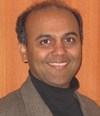
Rajesh is privileged to care for his parents. With this article, he touches his parents’ feet as an acknowledgement of this privilege. Their blessings inspire him to be a good son, brother, husband, father, and someday a grandfather.
The Great Parental Role Reversal:
Part 2: Caring for Our Elders: A Three-Act Play Called Life
by Dr. Bhagirath Majmudar
Aging parents in your home: Sage thoughts and practical tips for the young and the elderly on living together in harmony.
For those of us who came to the USA in the 1960s and 1970s, life has unfurled as a three-act play. We left our parents and grandparents in India with a heavy heart to come here. We established our renewed family, began succeeding in our respective professions. Our children, too, began to excel in their schools. We acquired palatial homes, capturing name, fame, and finances, and presented them proudly to our visiting parents. We felt “on top of the world...” And then just when things were humming along came a shift in the wind. When we learn to handle our existing challenges, life alters them and throws new ones at us. And thus Act I ended.
Cut to Act II. Our grown-up children, although bright and successful, now had a mind of their own. The words “yours obediently” with which we were raised were being erased to extinction. They did not want to dwell in parental homes but were living in small, cluttered apartments in distant places. They chose their career and life partners all by themselves. On a kaleidoscopic scale, we saw them living together before marriage, sometimes not wanting to live together after marriage, and strangely on occasion moving back with parents for some self-serving purpose. When finally settled down, they were hesitant to accommodate older parents in their homes and family. Were they really that self-involved, or is there another side to it?
Our younger generation
In my objective evaluation, our younger generation
is not very different from young people down the ages.
They are vibrant, with their own thought processes and
strong convictions. This inevitably implies a change of
belief systems from time to time and from generation
to generation. They love their family life but regard
their own life as more precious. This is actually healthy
and necessary for progress and evolution.
Thus, the onus is on everybody, not to let this Generation Gap turn into a De-generation Gap. It’s a truism that youth blows like a whirlwind, sweeping and uprooting anything in its way. The wind, like other components of nature such as water and fire, is essential and needs to be tamed rather than trashed. No progress would ever have been possible without that forceful lead from youth. They may drive erroneously fast to gain speed but may lose in safety. Those two qualities, however, are inseparably intertwined. Father Time and Mother Nature, united as a pair, will eventually set them right. We have to duck our head and just let the wind pass by.
How does this preamble apply to our current conditions?
In recent times, I have come across many articles written by both Indians and Americans about the obviously rising population of senior citizens, necessitating the sudden mushrooming of many senior homes. I have always solicited opportunities to talk to older citizens ever since I was very young, so let me share some chosen instances thereof, which may help us peep into the psyche of older people. This is essential because young people may think that old age is just a bad, deliberate choice, while old people (sometimes unjustifiably) claim how perfect they were when
young and how young people nowadays have become selfish and unruly. I think open and candid communication can diminish this dichotomy.
|
|
|
The author and his wife, with his mother-in-law, to whom he was a caregiver. |
Stories from my family
My mother-in-law, an extremely well educated, 90-plus-year-old lady, stayed with us for quite some time. I would find her, a self-motivated person, doing push-ups in the middle of the night or translating Kahlil Gibran at 2 a.m.! Her hand and finger movements, however, were so restricted that she could neither remove her clothes nor bathe without help. And yet, she would refuse my offer of help. My wife at that time was “head over heels” with her Ph.D. and was desperately short of time. It was only with considerable persuasion that the old lady would
allow me to bathe her. She also wanted to help out in the kitchen though clearly, it was too risky for her to work over a stove. At the end of the day, she would wait for the moment I would return from
hospital and walk through the door. If I went off to change my clothes before greeting her, she’d be mighty upset! My conclusion—she wanted to be independent, helpful, and needed, but when
denied these privileges, she felt lonely
and isolated.
I also stayed for one week with my daughter’s mother-in-law as her caretaker since my daughter and her husband had to be out of town for their respective jobs. The lady being an American, I could handle her dietary needs with relative ease. However, she wanted me to sit with her, talk with her throughout the day, and walk with her when I encouraged her to exercise. There was nothing wrong with her wish, but neither I nor my grandchildren could find that much time amidst our extremely tight schedule. My conclusion again—her loneliness resulted from her perception of our emotional and physical unavailability.
In both instances, loneliness was a common denominator, as it is among many other elderly parents. What can we do to allay this? The smallest courtesies go a long way. At home and in social gatherings, if we pause a moment to extend our help and say a warm hello to the elderly, their feelings of being lost and lonely can be greatly curtailed. They need very little, but the little they need is vital to them.
India—the changing face of elder care
For long decades, the joint family system in our
native land seemed to be an ideal solution for ensur-
ing that elders were cared for with love and respect
until their last days. But India has seen dramatic changes in its social structures—how do families there
manage now?
I spent about six weeks in Gujarat medical schools as a part of my sabbatical. I had long and detailed discussions with married women residents about their internal family arrangements. I was happily surprised to learn from them that they could handle their stressful medical career because their parents-in-law undertook the care of their children and household chores.
I spent my evenings in India strolling through the nearby park, which was crowded with older couples and people. While talking to some of them, they complained in one voice that their son/daughter would talk to them only for two minutes a week! Another complaint was that their luxurious apartments had no balcony from where they could look at the outside world and no fresh air circulation because their children had installed air conditioning. Upon closer interrogation I found that their sons were often in other distant parts of India because of their careers. The wives had to stay back to continue with their jobs and children’s schooling. I asked their older parents how they could expect to have a long—and meaningful—talk with their adult children when they were so far from home and struggling to keep their own family together.
I also visited some places in India offering homes for senior living, which is a rapidly expanding service like in the U.S. Some of them indeed offered a caring and a comfortable lifestyle. I met many older people who were living there happily and visiting their children from time to time. The stigma of living in a senior home, away from children, is fast fading in India. In fact, it conforms to vanaprasthashrama, our ancient tradition of older people leaving behind the hustle and bustle of society for a life of quietude.
|
|
|
Three generations of the Majmudars. A devoted son to his mother-in law, the author plans to be a grateful recipient of care if it comes to that. |
Home care for aging parents—do’s and don’ts
Coming down to more practical matters, old age in many ways is comparable to childhood, and preparation should be made accordingly. When our children were born, we childproofed the house. Similarly, the utmost attention should be given to making the home safe for older people. There is an incredibly high incidence of their easily falling and breaking their bones. Bathrooms, where such incidents commonly occur should have a holding bar. Advise older parents or grandparents to not lock the doors to the bathroom or their own room so that they can be instantly opened if necessary. Holding the handrail while using a stair-
case should be mandatory. A visit to a senior living
facility can give you many other practical ideas.
Give clear explanations to elderly parents or grandparents on how they should adhere to their medication schedule, keeping a supervisory eye on them. Medical students who did a random survey of elderly people’s homes in Baltimore came up with innumer- able instances where medicine bottles remained unopened! An inescapable part of caring for elders is making trips to pharmacies and doctor’s offices, an oft repeated routine.
If they go out for a walk, they should have in their pockets the name, address, and telephone numbers for immediate contact. There have been nationally known tragic examples of old Indian men randomly walking down the street, knowing nothing about their whereabouts or the strict enforcement of laws that prevail in this country.
In most families today, men and women both work, and most jobs involve traveling. In these circumstances, a dependable caretaker has to be arranged for older parents. They should be instructed how to use the telephone and how not to answer every call or knock on the door or become victims of a financial scam.
Older parents have their obligations, too. Listening to their grown-up children and following their instructions is their foremost responsibility. Helping the household to the best of their capacity, maintaining a loving and understanding attitude, spreading joy and compassion, and avoiding criticism of the “new” lifestyle are only some examples of how elders can play a positive and happy role in the family. I have seen consistently how our grandchildren adore their grandparents, although in their own way with a digital distance. Grandparents can become their role model if they so decide.
Lastly, taking care of the elderly at home should not be left to women only. When everyone at home including children participate, it will become a synergistic symbiosis. It’s an experience that can unite the family like no other. On the one hand, a lapse in care can leave a lifetime of regret. Satisfaction, on the other hand, will provide lasting joy. The Three-Act Play will then end with a Grand Finale!
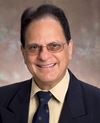
Bhagirath Majmudar recently retired after 45 years of service at Grady and Emory University Hospitals, from positions of professor of pathology and associate professor of obstetrics/gynecology. He is also a Sanskrit scholar, a Hindu priest, and a poet, writer, playwright, and performer.
Enjoyed reading Khabar magazine? Subscribe to Khabar and get a full digital copy of this Indian-American community magazine.
blog comments powered by Disqus




